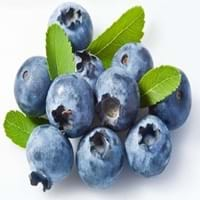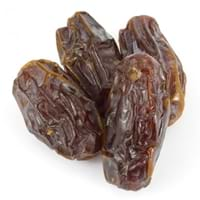Health Benefits
Cancer prevention, Cures gastro-intestinal troubles, Improves night vision, Improves stomach health, Prevents diabetes, Prevents high blood pressure, Reduces blood circulation problems
Cancer prevention, Cures gastro-intestinal troubles, Diarrhea treatment, Heart care, Heat stroke treatment, Improves muscular strength, Prevents constipation, Prevents nerve damage, Strengthening of bones
General Benefits
Fights against infections, Helps in weight loss, Prevents blood clotting in vessels, Treatment of urinary tract infections
Boosts immune system, Maintains healthy cholesterol level, Strengthens bones
Skin Benefits
Anti-aging benefits, Nourishes skin, Protects against skin damage
Anti-aging benefits, Brightens and lightens complexion, Reduces wrinkles, Treatment of skin diseases
Hair Benefits
Prevents hair loss
Prevents hair loss, Promotes longer and healthier hair, Protects hair, Regulates hair growth
Allergy Symptoms
Not Available
Redness of eyes, Runny nose, Sneezing, Watery eyes
Side Effects
Decrease in blood sugar levels, Diarrhoea, Dizziness, Headache, Internal bleeding, Stomach pain
Allergic reaction, Diarrhoea, Intestinal gas, Stomach pain, Tooth decay, Weight gain
Best Time to Eat
As a snack in the late afternoon, Don't consume at night and before bed, Eat the fresh ones, avoid mixing with any other foods, don't eat after meal., Morning time (before lunch)
Any time except an hour after meal, Don't consume at night and before bed
Vitamin B5 (Pantothenic Acid)
Vitamin C (Ascorbic Acid)
Vitamin K (Phyllochinone)
Calories in Fresh Fruit with Peel
Calories in Fresh Fruit without Peel
Not Available
Not Available
Calories in Frozen Form
Not Available
Not Available
Calories in Dried Form
Not Available
Calories in Canned Form
Not Available
Not Available
Season
Summer
Spring, Summer
Varieties
Dwarf bilberry, Piper, bog blueberry, Northern bilberry, Mountain bilberry and Oval-leaved bilberry
Barhi, Dayri, Deglet Noor, Halawy, Khadrawy, Medjool, Thoory and Zahidi
Color
Dark purple
Black, Brown, Red, Yellow
Inside Color
Light Green
Brown
Soil Type
Moist, Well-aerated
Clay, Loam, Sand
Climatic Conditions
Cold
Hot, Warm
Facts about
- Bilberries are used in manufacturing of alcoholic drinks.
- They are used to improve aromas of sorbets.
- The green extract of it's leaves is used in textile industry as natural dye.
- Date is known as the tree of life in Middle east.
- Date palms cover 3% of the earth's total farmlands.
- Scholars believe that date (and not apple) was the real fruit mentioned in the Bible's Garden of Eden.
Spirits
Yes
Not Available
Cocktails
Yes
Not Available
Other Countries
Denmark, Finland, Iceland, Sweden
Algeria, Iraq, Oman, Pakistan, South Africa, United Arab Emirates
Top Importer
United States of America
India
Top Exporter
Chile
United Arab Emirates
Botanical Name
Vaccinium myrtillus
Phoenix Dactylifera
Synonym
blaeberry, whinberry, European blueberry, whortleberry
Not Available
Subkingdom
Tracheobionta
Tracheobionta
Division
Magnoliophyta
Magnoliophyta
Class
Magnoliopsida
Liliopsida
Subclass
Dillenhidae
Arecidae
Family
Ericaceae
Arecaceae
Species
Vaccinium myrtillus
P. dactylifera
Difference Between Bilberry and Date
We might think that Bilberry and Date are similar with respect to nutritional value and health benefits. But the nutrient content of both fruits is different. Bilberry and Date Facts such as their taste, shape, color, and size are also distinct. The difference between Bilberry and Date is explained here.
The amount of calories in 100 gm of fresh Bilberry and Date with peel is 44.00 kcal and 282.00 kcal and the amount of calories without peel is Not Available and Not Available respectively. Thus, Bilberry and Date belong to and category.These fruits might or might not differ with respect to their scientific classification. The order of Bilberry and Date is Ericales and Arecales respectively. Bilberry belongs to Ericaceae family and Date belongs to Arecaceae family. Bilberry belongs to Vaccinium genus of Vaccinium myrtillus species and Date belongs to Phoenix genus of P. dactylifera species. Beings plants, both fruits belong to Plantae Kingdom.









